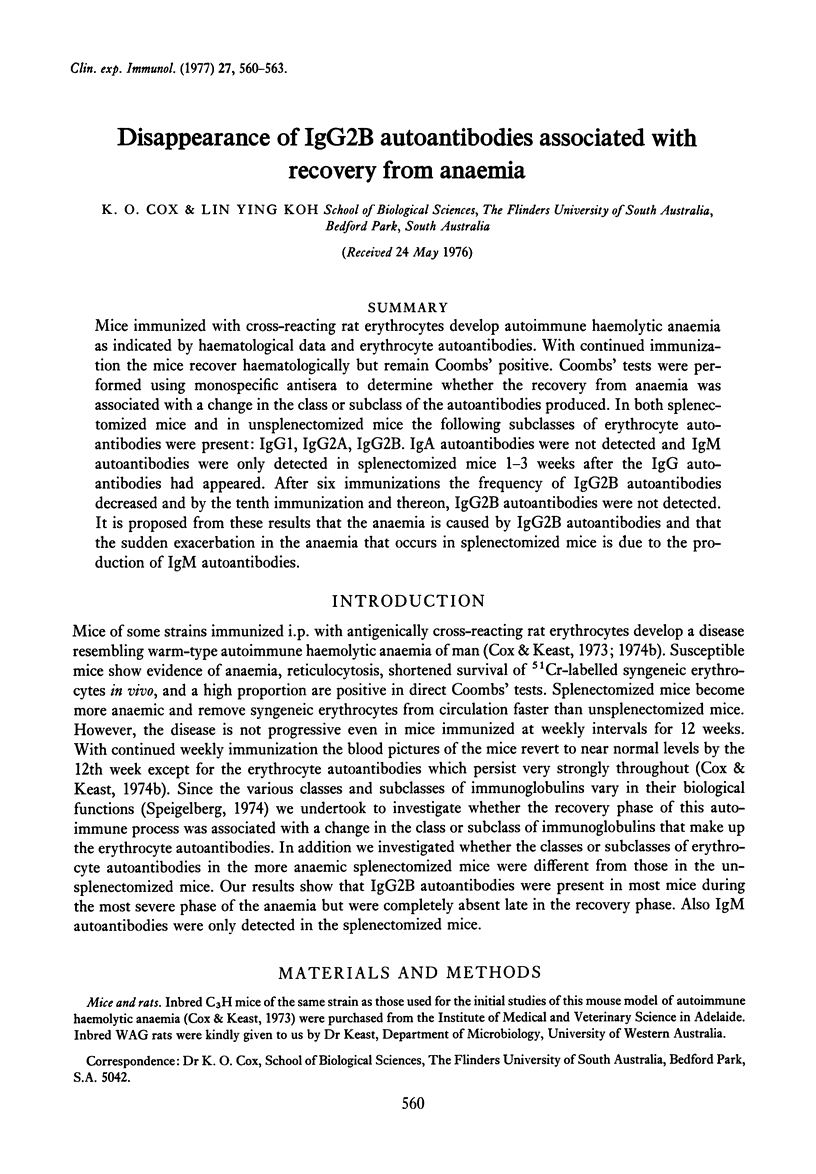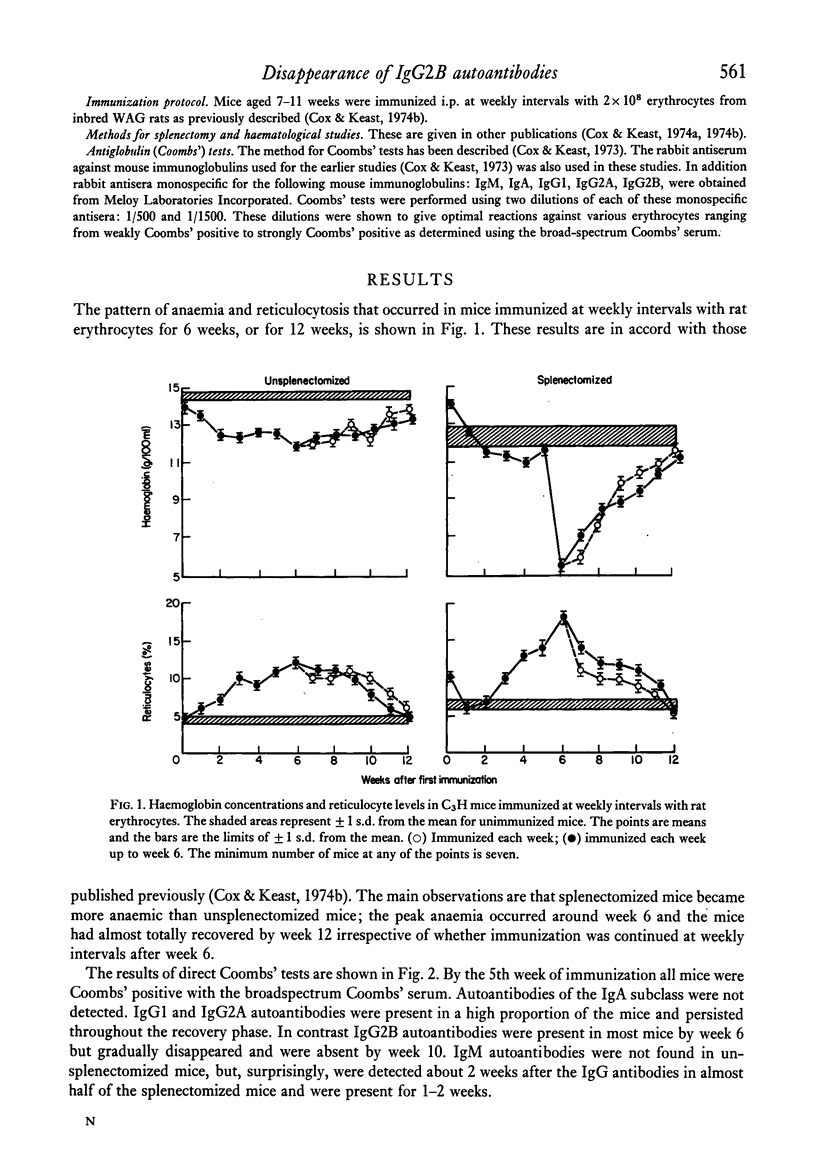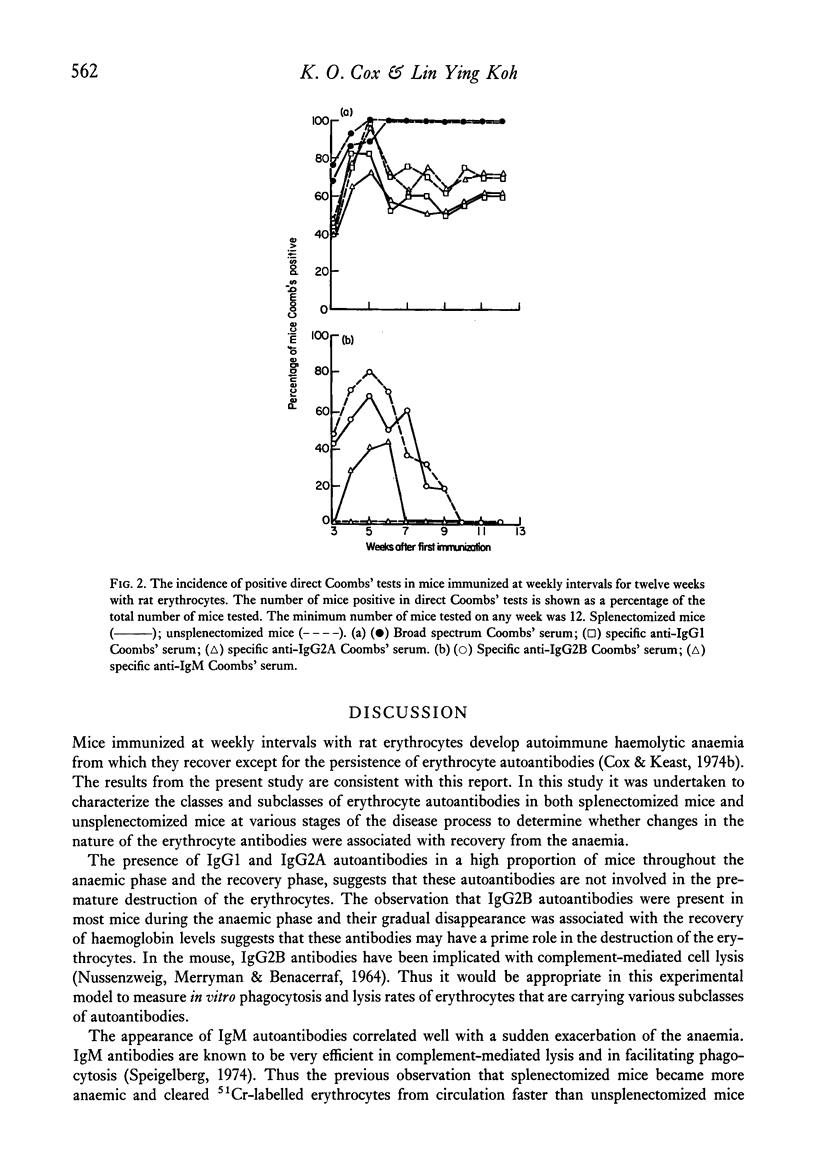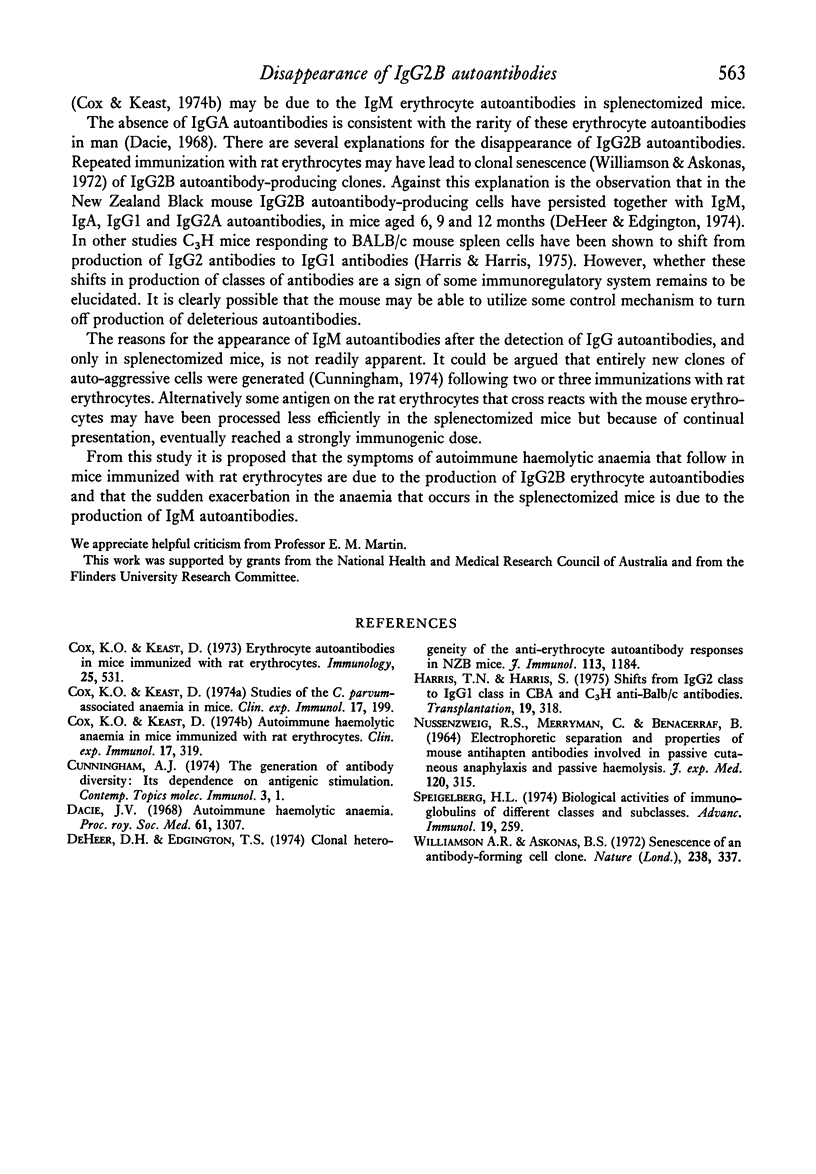Abstract
Mice immunized with cross-reacting rat erythrocytes develop autoimmune haemolytic anaemia as indicated by haematological data and erythrocyte autoantibodies. With continued immunization the mice recover haematologically but remain Coombs' positive. Coombs' tests were performed using monospecific antisera to determine whether the recovery from anaemia was associated with a change in the class or subclass of the autoantibodies produced. In both splenectomized mice and in unsplenectomized mice the following subclass of erythrocyte autoantibodies were present: IgG1, IgG2A, IgG2B. IgA autoantibodies were not detected and IgM autoantibodies were only detected in splenectomized mice 1-3 weeks after the IgG autoantibodies had appeared. After six immunizations the frequency of IgG2B autoantibodies decreased and by the tenth immunization and thereon, IgG2B autoantibodies were not detected. It is proposed from these results that the anaemia is caused by IgG2B autoantibodies and the the sudden exacerbation in the anaemia that occurs in splenectomized mice is due to the production of IgM autoantibodies.
Full text
PDF



Selected References
These references are in PubMed. This may not be the complete list of references from this article.
- Cox K. O., Keast D. Autoimmune haemolytic anaemia induced in mice immunized with rat erythrocytes. Clin Exp Immunol. 1974 Jun;17(2):319–327. [PMC free article] [PubMed] [Google Scholar]
- Cox K. O., Keast D. Erythrocyte autoantibodies induced in mice immunized with rat erythrocytes. Immunology. 1973 Sep;25(3):531–539. [PMC free article] [PubMed] [Google Scholar]
- Cox K. O., Keast D. Studies of the Corynebacterium parvum-associated anaemia in mice. Clin Exp Immunol. 1974 May;17(1):199–207. [PMC free article] [PubMed] [Google Scholar]
- Cunningham A. J. The generation of antibody diversity: its dependence on antigenic stimulation. Contemp Top Mol Immunol. 1974;3:1–26. doi: 10.1007/978-1-4684-2838-4_1. [DOI] [PubMed] [Google Scholar]
- Dacie J. V. Autoimmune haemolytic anaemia. Introduction and perspectives. Proc R Soc Med. 1968 Dec 12;61(12):1307–1309. [PMC free article] [PubMed] [Google Scholar]
- De Heer D. H., Edgington T. S. Clonal heterogeneity of the anti-erythrocyte autoantibody responses of NZB mice. J Immunol. 1974 Oct;113(4):1184–1189. [PubMed] [Google Scholar]
- Harris T. N., Harris S. Shifts from IgG-2 class to IgG-1 class in CBA and C3H anti-BALB/c antibody. Transplantation. 1975 Apr;19(4):318–325. doi: 10.1097/00007890-197504000-00007. [DOI] [PubMed] [Google Scholar]
- NUSSENZWEIG R. S., MERRYMAN C., BENACERRAF B. ELECTROPHORETIC SEPARATION AND PROPERTIES OF MOUSE ANTIHAPTEN ANTIBODIES INVOLVED IN PASSIVE CUTANEOUS ANAPHYLAXIS AND PASSIVE HEMOLYSIS. J Exp Med. 1964 Aug 1;120:315–328. doi: 10.1084/jem.120.2.315. [DOI] [PMC free article] [PubMed] [Google Scholar]
- Williamson A. R., Askonas B. A. Senescence of an antibody-forming cell clone. Nature. 1972 Aug 11;238(5363):337–339. doi: 10.1038/238337a0. [DOI] [PubMed] [Google Scholar]


